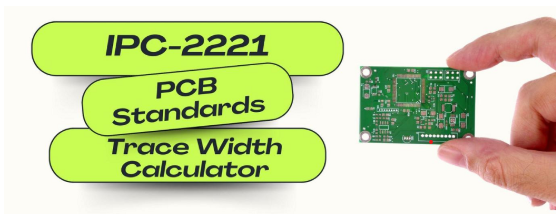In the world of PCB manufacturing, achieving high-quality and reliable products is critical to the success of electronic devices. Two key standards that play an essential role in ensuring the quality and consistency of printed circuit boards (PCBs) are IPC-A-610 and IPC-2221. These standards not only guide manufacturers in their processes but also help in meeting the increasingly stringent requirements of modern electronic applications. In this article, we will explore the importance of these two standards in PCB design and manufacturing and how they contribute to excellence.
IPC-A-610: The “Acceptability of Electronic Assemblies” Standard
IPC-A-610 is one of the most widely recognized standards for the inspection of electronic assemblies. Often referred to as the “Bible of Electronics Manufacturing,” IPC-A-610 sets the guidelines for the acceptability of solder joints, component placements, and overall assembly quality. It provides a detailed framework for defining the levels of acceptability for various aspects of PCB assembly, such as:
- Soldering Quality: IPC-A-610 outlines the standards for proper soldering, ensuring that components are securely attached to the PCB with minimal defects such as cold joints or excessive solder bridges.
- Component Placement: This standard helps in ensuring that components are placed accurately and that no component is misaligned, bent, or improperly installed.
- Visual Inspection: It provides clear guidelines for performing visual inspections, helping operators identify defects before the final product is shipped.
By adhering to IPC-A-610, manufacturers ensure that their PCBs meet the required reliability standards, which is particularly crucial in industries like aerospace, automotive, and medical devices where failure is not an option.
IPC-2221: The “Generic Requirements for Designing Printed Boards” Standard
While IPC-A-610 is focused on assembly and inspection, IPC-2221 deals specifically with PCB design and fabrication. IPC-2221 provides a comprehensive set of generic requirements for designing printed boards that are both manufacturable and functional. It covers a wide range of considerations, including:
- Design for Manufacturability (DFM): IPC-2221 emphasizes designing PCBs in a way that makes them easier and more cost-effective to manufacture. It helps engineers avoid common pitfalls, such as overly complex layouts or tight tolerances that could complicate the manufacturing process.
- Signal Integrity and Layout: The standard provides guidance on how to design PCBs that maintain signal integrity, which is critical in high-frequency applications where signal loss or distortion can cause failures.
- Fabrication Requirements: It sets out specific requirements for how PCBs should be designed to meet the capabilities of the fabrication process, ensuring that designs can be efficiently produced without compromising quality.
IPC-2221 helps bridge the gap between design and production by ensuring that the PCB is not only functional but also easy to fabricate and assemble. By adhering to these guidelines, designers can minimize the risks of design errors, manufacturing delays, and costly reworks.
The Synergy Between IPC-A-610 and IPC-2221
Although IPC-A-610 and IPC-2221 focus on different stages of the PCB lifecycle—assembly and design, respectively—they work in harmony to ensure that the final product meets the highest standards of quality. By integrating both into their manufacturing processes, companies can achieve:
- Higher Yield Rates: With IPC-2221 guiding the design to be manufacturable and IPC-A-610 ensuring that assembly is up to standard, manufacturers are more likely to produce defect-free products with fewer reworks.
- Cost Efficiency: By following IPC-2221’s design-for-manufacturability guidelines, manufacturers can reduce the risk of costly design flaws that may arise later in production. IPC-A-610 ensures that the assembly process is efficient, minimizing the need for repairs or replacements.
- Reliability: Both standards emphasize reliability at different stages of the process. IPC-A-610 ensures that components are assembled correctly, while IPC-2221 ensures that the design is robust and suited for production.
Conclusion
IPC-A-610 and IPC-2221 are indispensable standards for achieving excellence in PCB manufacturing. While IPC-A-610 focuses on the acceptability of assembly quality, ensuring that each PCB is built to the highest standards, IPC-2221 provides a solid foundation for creating designs that are easy to fabricate and perform reliably. By integrating these standards into their manufacturing processes, companies can deliver high-quality PCBs that meet the needs of the modern electronics industry. Whether it’s for automotive, medical, or consumer electronics, adhering to IPC-A-610 and IPC-2221 ensures that PCBs are not only functional but also built to last.




